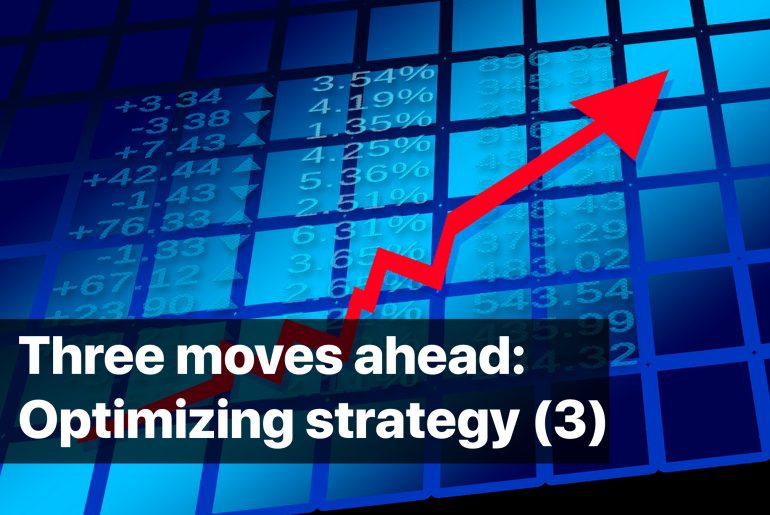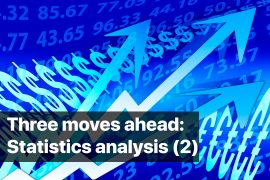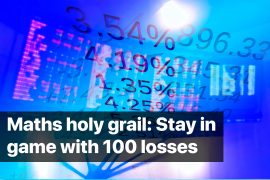This is the third article that shreds the light on the ways to increase the profitability of your trading system. Before you proceed to this step, make sure you are aware of the basics to set a winning strategy up and effectively work with your trading statistics. Thus, these steps will act as a solid base for a successful strategy that leverages your strengths and blocks possible vulnerabilities. The aim of this article is to empower your set of tools to grow the deposit by smart optimization of your strategy.
Optimize by a deeper analysis
So, never stop on “naked” stats. Go further! To win in the long-term you need to see the info beyond and optimize your strategy accordingly and take the rational decisions. Here are some recommendations
Thus, you can get more insights into trading by calculating key trading performance metrics. What are they needed for? Simply, to see more opportunities and control profitability, to adjust the strategy in the most effective way. For example:
Risk-reward ratio: optimize the position setup
Previously (point 2), we talked about changing the stop-losses in different cases (read here why it’s not enough to set a single stop-loss)). Exactly deeper analysis will help you to do it properly.
First of all, it should be mentioned that one of the most common mistakes is to use the same risk-reward ratio* with different deposit size. It’s totally wrong in terms of money management.
Risk/reward ratio is the ratio between the capital you put at risk (your stop-loss size) in each trade to the profits you are aimed to get as a reward for your risk.
To clarify, Steve was trading with a deposit of $10,000 with a risk of $100 per trade (1%). After he got a solid inflow of money, his deposit became 1 million dollars. He continued trading with the same risk-reward ratio, considering this strategy to be winning. But risk (potential loss) in this case became equal to his initial capital that could turn out to be too painful in case of losses: He could lose $10,000 in a single trade! And also it can turn out to be ineffective in terms of gains (next point).
Therefore, remember: The risk-reward ratio should be recalculated each time you change the deposit and the position size. Otherwise, the strategy might become ineffective.
Tip: if you know your win-loss ratio, you can define how much risk to put in each trade in order to survive in the market. Read more about the win-loss ratio and optimization of the risk-reward ratio here.
Ralph Vicne rule: Optimal F to maximize profitability
Not only the risk-reward ratio is a subject to monitor and recalculate. Use the profitability chart and performance metrics to manage your funds effectively. We mean not simply increase and decrease the position size proportionally to the deposit but to analyze precisely your stats and strategy to find an optimal position size for each case (deposit, win-loss and risk-reward ratios). The same works with leverage.
Thus, remember: The bigger position size does not always mean bigger profits.
This rule is already proven by a wide range of traders over time. It is also reflected in Optimal F theory by Ralph Vince, a programming and trading systems expert. The theory is broken down on the chart below, where “0.15x” is the initial position size of Steven. Thus, with 0.15x-position size, his weekly earnings accounted for $12.5. Definitely, he wants more and with the same strategy he changes the position size to 2x. Great! Now his earnings are $18k. But Steve is unstoppable and wants even more. The next time he changes his position size to 5x, hoping to get a proportionally bigger reward. But look: oops, he gets only $9k. Sad Steve faced a common mistake: ineffective position sizing. Then, how to find the right one?
As you can see, the gain of $18k is the maximum possible gain in this strategy for Steve. It is called an optimal F. Thus, it defines the amount of capital that should be invested in each trade to bring maximum profits. Generally, it is based on the history of trades, and key trading performance metrics, multiple experiments in different market state.
Thus, trading stats and performance metrics act as a benchmark for your trading performance that indicates its strong and weak sides and enables you to get the actionable insights. What you need to do is simply track, timely notice changes and analyze them! By the way, hedge funds build their strategies upon these rules!
To conclude, it’s worth saying that developing a risk and money management system and integrating it into your trading strategy may sound already quite complex. And it is so! What is more, an equally difficult task is to COMPLY with risk management (this is exactly one of the most significant factors that help to win). This is the only working way of gradual increase in your profitability. There are no magic pills, just focus and act!
Also, remember that it’s often a tough issue, as almost every trader experiences a bright palette of emotions that often makes them lose. It is why we developed Bitinsure and automated all routine and “painful” instruments of risk management and enables traders to focus on what matters the most. Try it for free!
Stay tuned and join our social media:
Telegram: https://t.me/bitinsurecom
Facebook: https://www.facebook.com/bitinsure
Twitter: https://twitter.com/bitinsure_news





